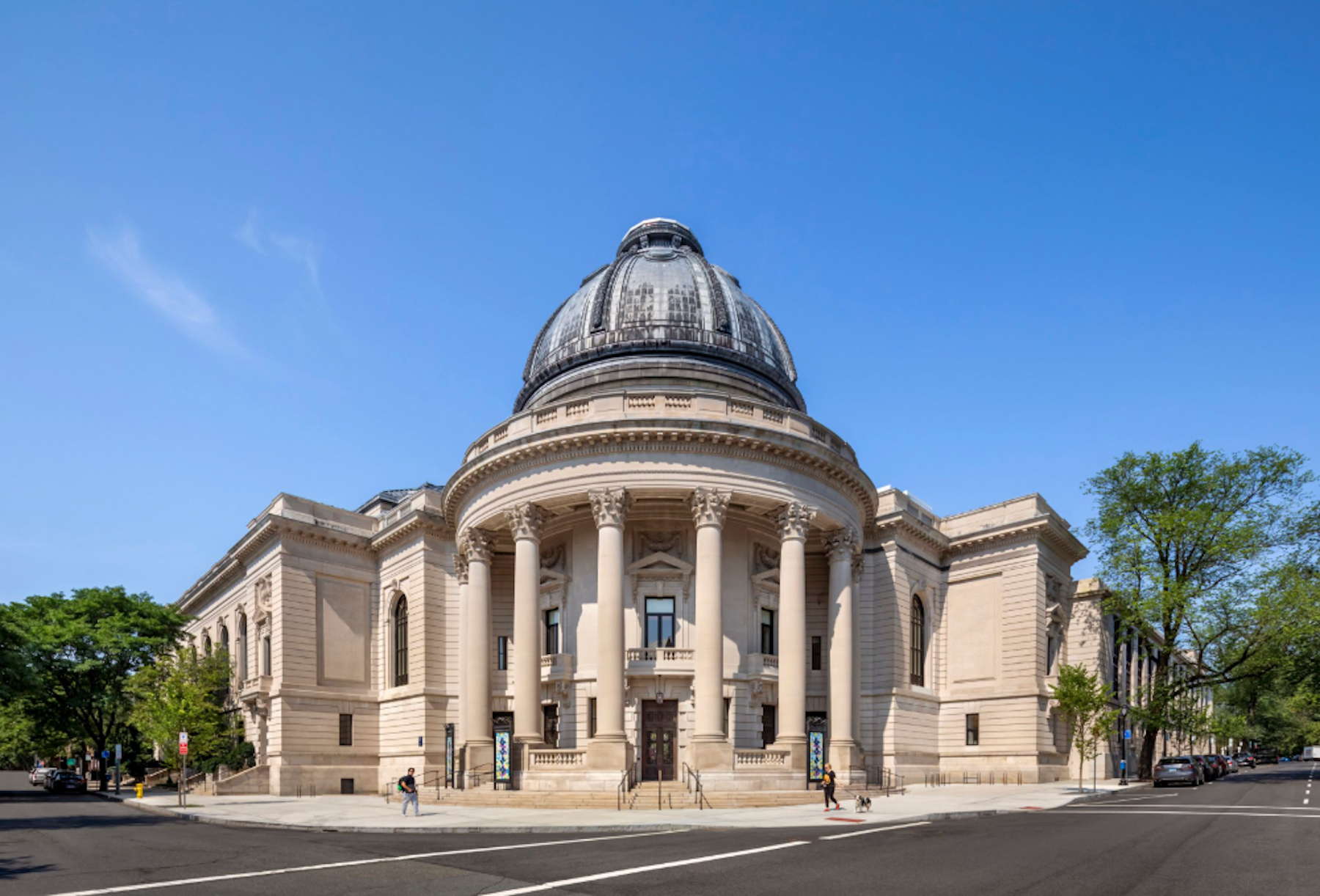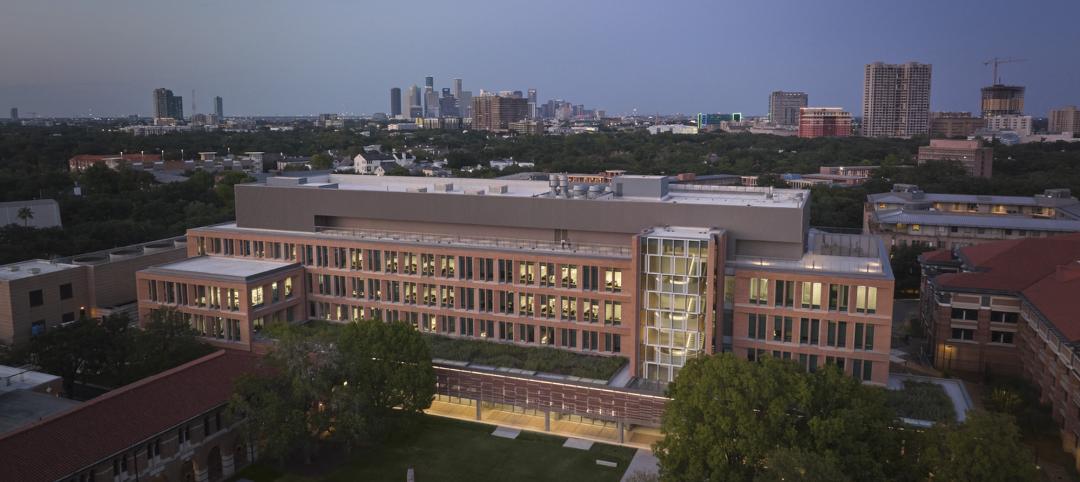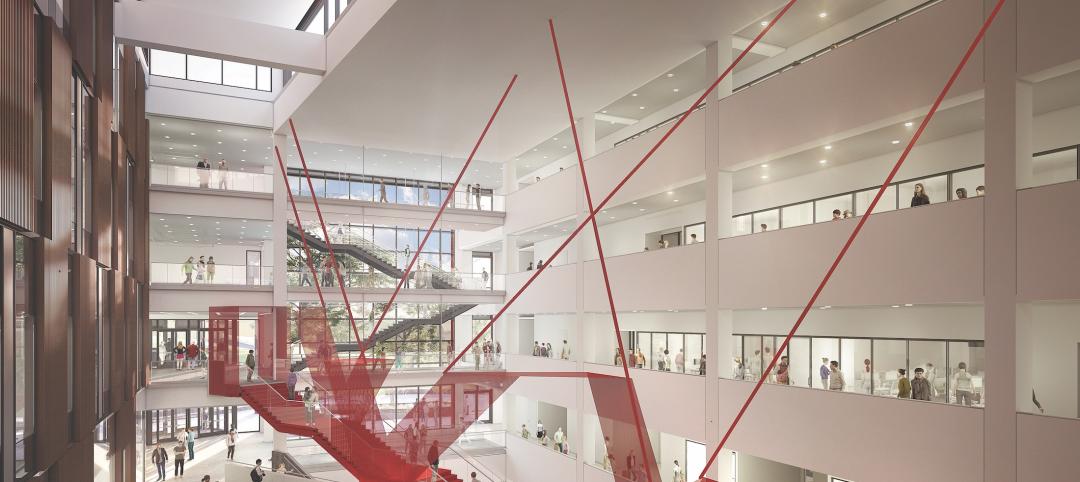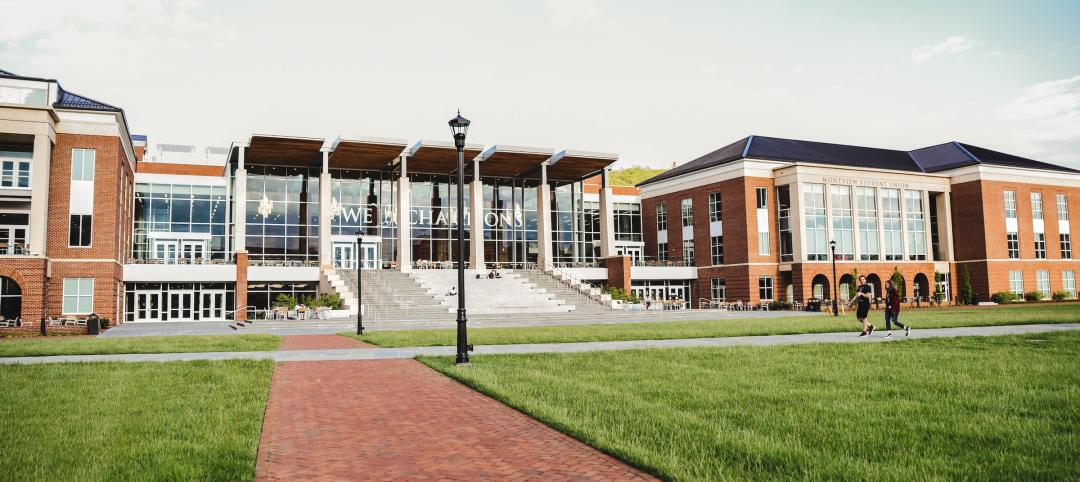Robert A.M. Stern Architects (RAMSA) has unveiled the design of their restoration of the Schwarzman Center at Yale University, which includes dining spaces, a bar, and a food shop. The renewed 123,000-sf center will consist of many features to promote social life on campus.
The transformation of the Schwarzman Center was led by the RAMSA team, and includes historical preservations and the design of new additions.
“The project creates a new campus center designed to connect students, faculty, alumni, and visitors through dining and events,” says Melissa DelVecchio, Partner at RAMSA.
Combining Historic Preservation With Modern Technology
The actual physical expression of the building represents RAMSA’s and the university’s efforts to combine historic preservation, modern technology, and social space. RAMSA’s preservation efforts focused specifically on the Commons, Memorial Hall spaces, War Memorial spaces, the President’s Room, and the Dome Room.
The team removed one-story underground moat space along Grove Street and built a three-storey addition, which was inspired by the original proposal from Carrère & Hastings that detailed an addition to the building’s original construction about 120 years ago. An underground addition was also added and the new Hewitt Plaza was created.

Recreating The Commons
The 66-ft-high dining hall, the Commons was deeply cleaned and preserved after about a century’s worth of smoke and grime. The foundation in this portion was found to be severely deteriorated. As a result, the team decided to dig up and rebuild the foundation.
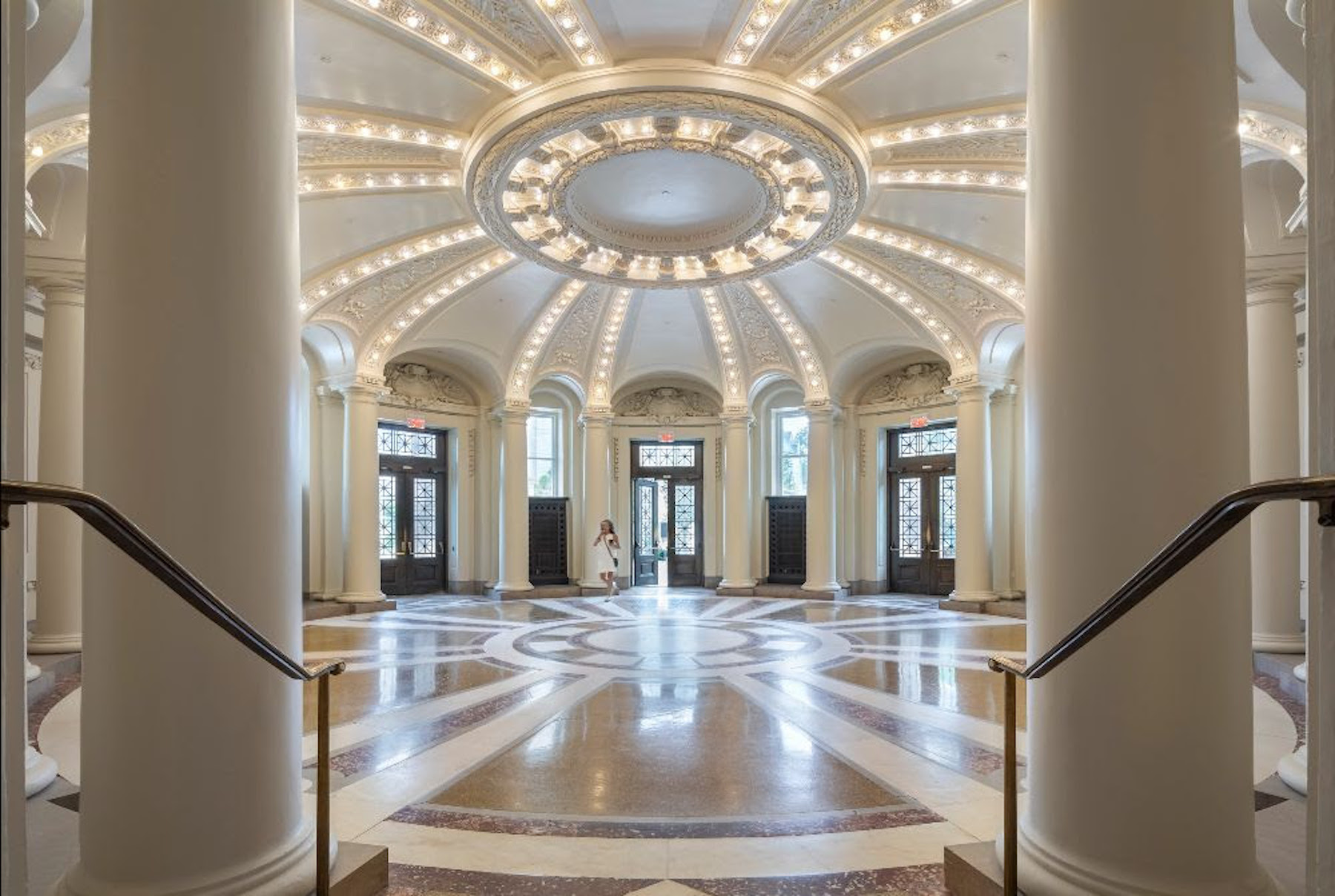
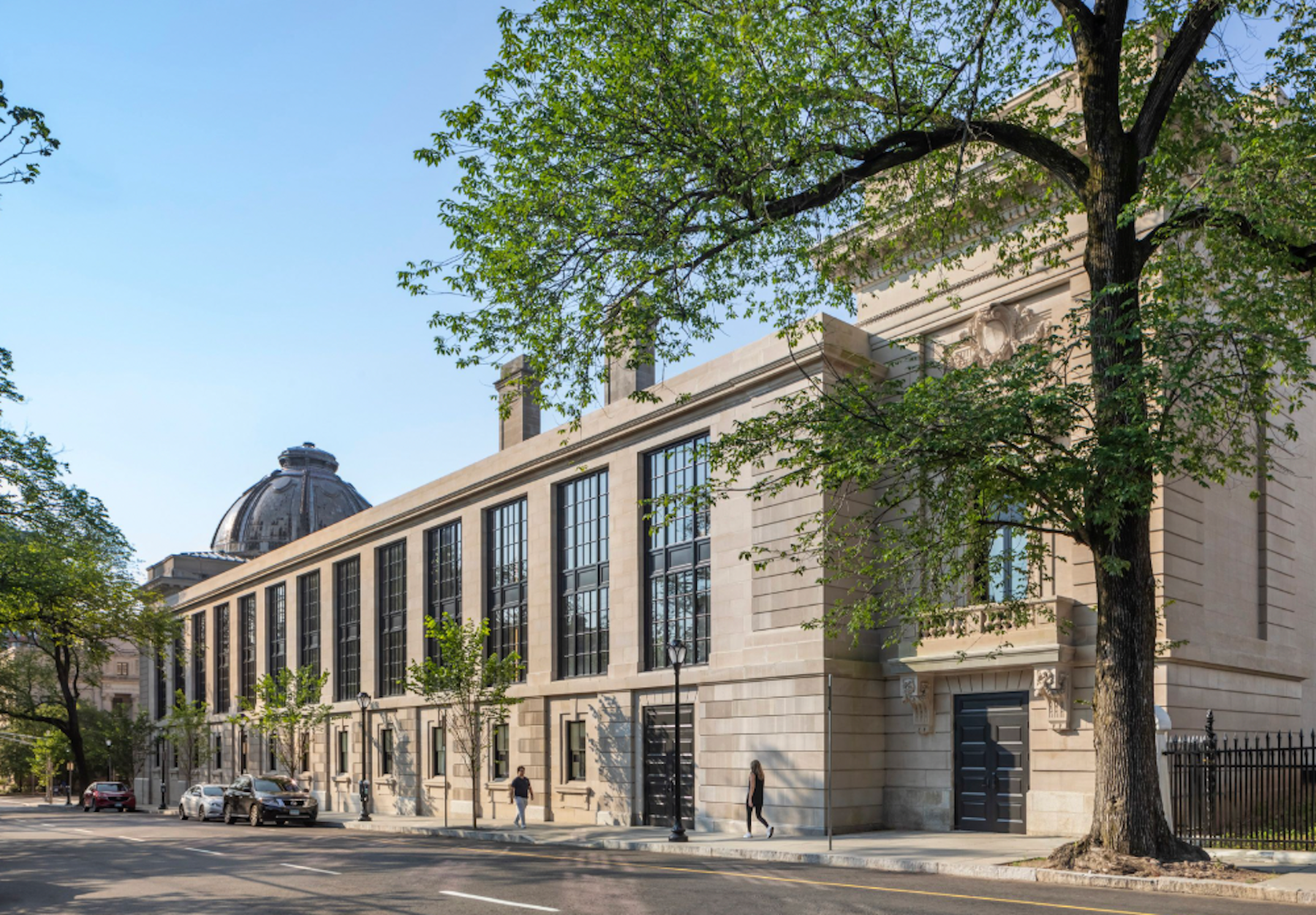
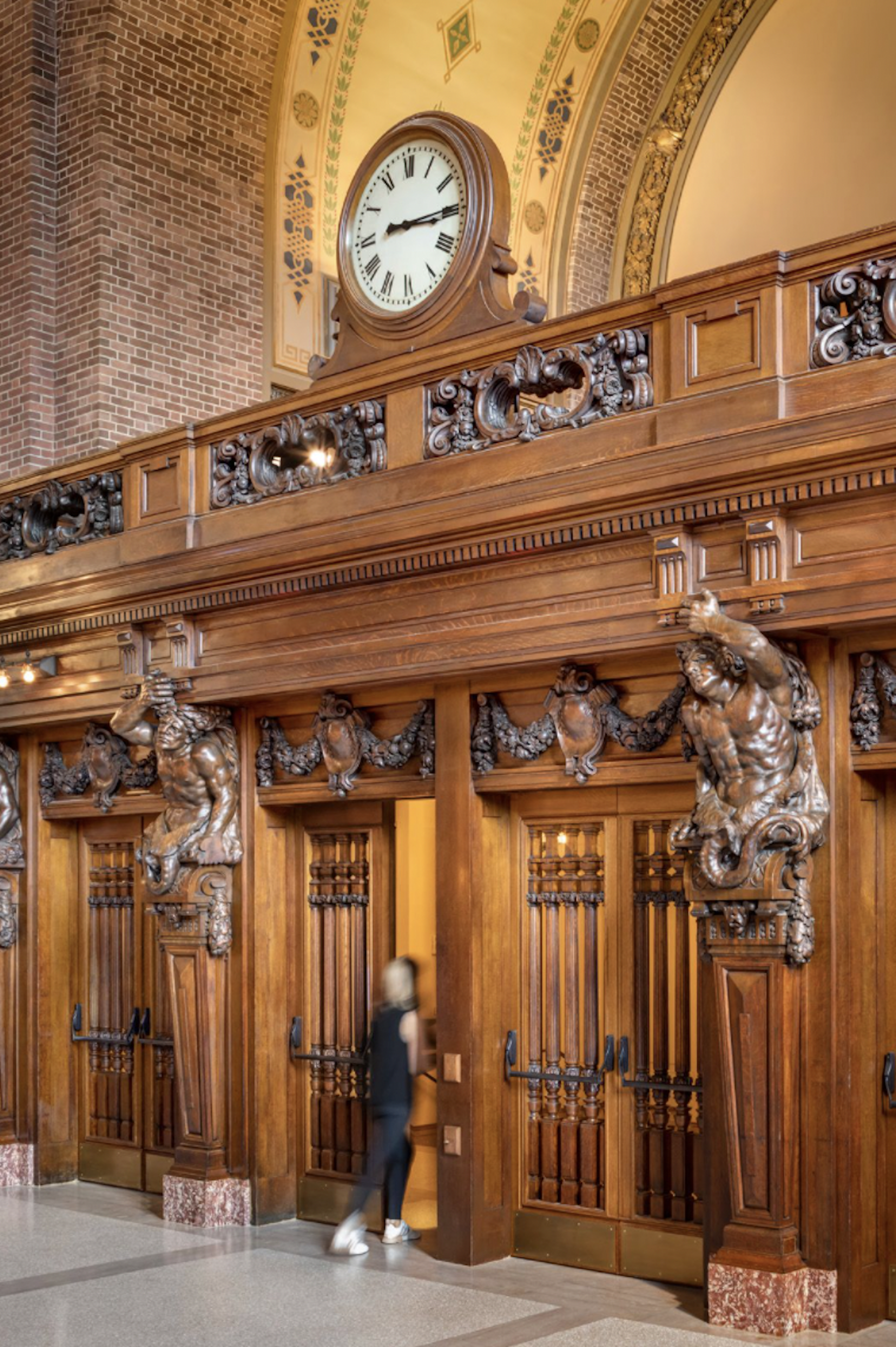
Other Dining And Performance Spaces:
- A casual dining space with a stage, backstage area, and partition
- Flexible performance space, and doubles as a space for masterclasses, events and lectures
- A bar occupying the former food storage space under the Rotunda
- The Bow Wow-food shop
- Renovated and designed to allow for important events hosted in the Yale calendar
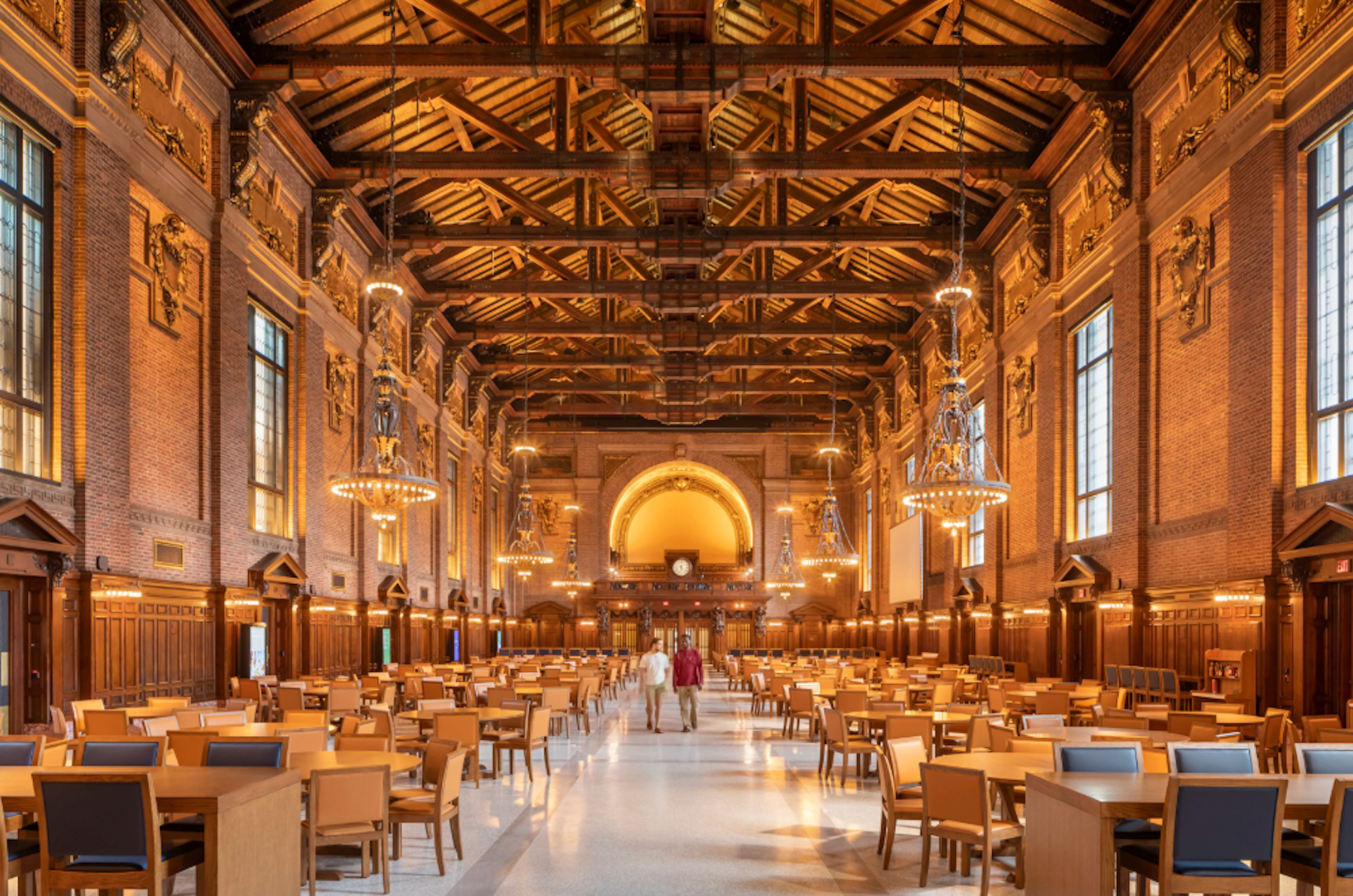
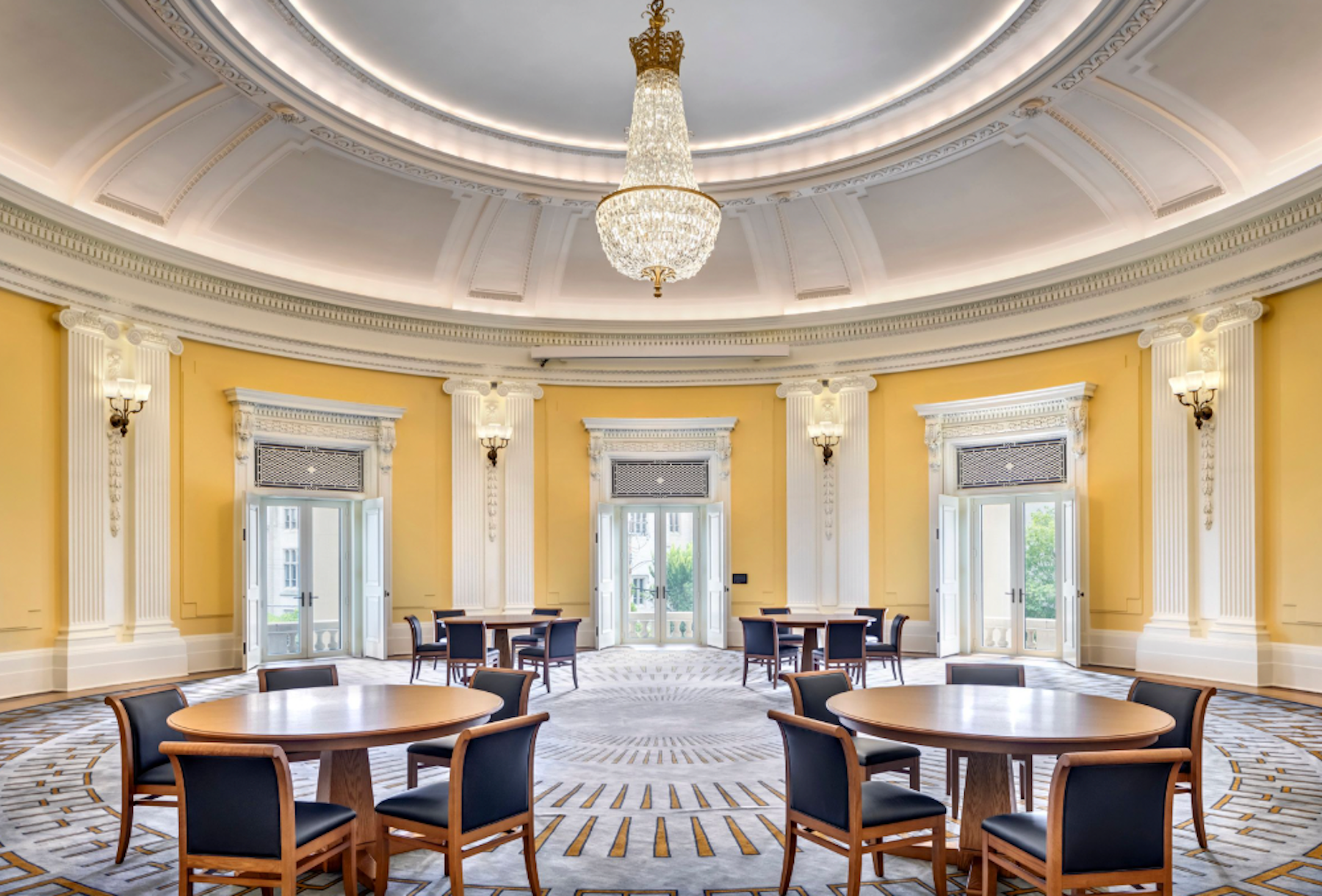
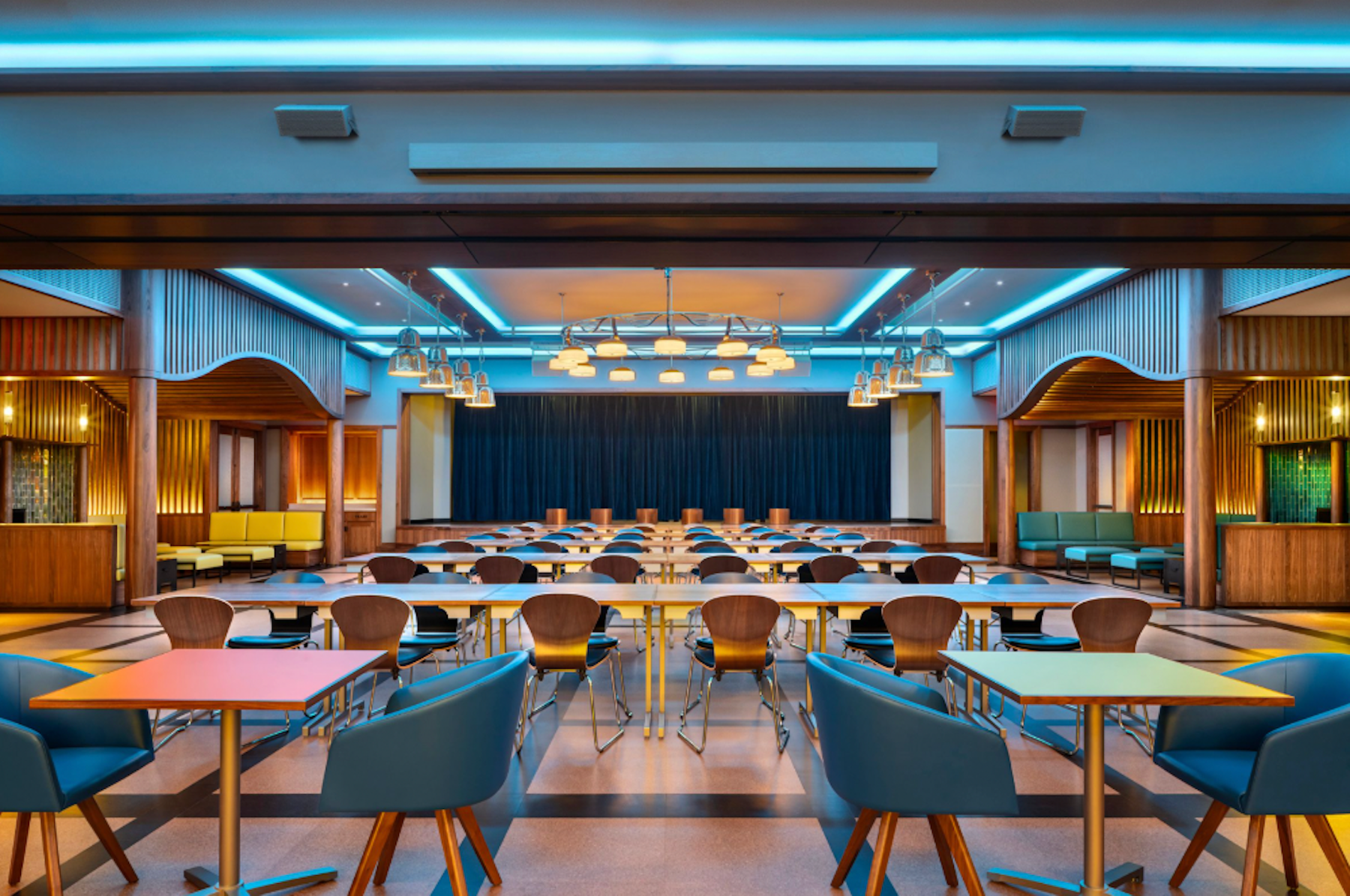
Building Team
Architect of Record: Robert A.M. Stern Architects
Structural Engineer: Robert Silman Associates
MEP Engineer: AKF Group, LLC
Civil Engineer: Langan
Construction Manager: Dimeo Construction Company
Project Statement
Robert A.M. Stern Architects (RAMSA) unveils the design of their renovation and restoration of the Schwarzman Center at Yale University. Located in the Bicentennial Building’s north wing in the heart of Yale University’s campus, the centre recently opened its doors in fall of 2021 after a significant overhaul of the building, which began in 2017.
Yale University engaged renowned architecture firm, Robert A.M. Stern Architects, to lead the transformation of the Schwarzman Center, including the historical preservation and the design of the new additions. The RAMSA team, led by Partners Graham Wyatt, Melissa DelVecchio and Jennifer Stone, worked with an advisory board consisting of prominent individuals in the arts world, creating connections for Yale and the arts community to help sustain programming at the Schwarzman Center. Before the building closed for construction, a series of preview events were held to highlight future possible events in the renovated building, including a hackathon, a dinner presentation on sustainability, and a presentation on Prince and David Bowie’s contributions to the musical world.
“It’s been an honor to work with Yale University to restore and reinvent Yale’s Bicentennial Buildings, creating a new campus center that connects students, faculty, staff, alumni and visitors for the first time ever through dining and arts events. The preservation of these important historic spaces -- at the heart of the Yale experience -- along with new additions that support arts and cultural programming, will enrich student life, building new bridges across Yale’s community,” says Melissa DelVecchio, Partner at RAMSA. "The flexible and technologically-advanced spaces further Yale’s values – promoting cross-disciplinary collaboration, fostering a sense of belonging, and elevating the importance of wellness. We look forward to seeing Yale’s vibrant culture come to life at the Schwarzman Center."
As one of the first buildings built by Yale, its original purpose was to unite students from Yale College and the Sheffield Scientific School. As Yale grew and expanded, the intellectual and social focus of the student body grew increasingly disconnected. Today, the renovated Schwarzman Center achieves a multitude of goals: bringing Yale students together as one unit; serving as a hub of intellectual and student life; encouraging socialization through dining, events and performances; and fostering relationships among the wider Yale community.
The idea for a new campus center came about thanks to a study conducted by Yale, which indicated a high level of student support. In addition, there was an urgent need to renovate the Schwarzman Center; the floors in the Commons – the University’s historic dining hall – were also falling into severe disrepair as the original cinder fill terrazzo floor was structurally unsound and could no longer bear the weight of a dining hall. The Schwarzman Center renovation was made possible thanks to Blackstone CEO Stephen Schwarzman, a Yale graduate, who donated over $100 million to the project, both for the building and for support programs.
The building’s physical expression represents the university’s mission of combining historic preservation with modern technology and increased social space. RAMSA’s preservation efforts focused on the Commons, all the spaces in Memorial Hall, including the war memorial – which inspired Maya Lin’s design for the Vietnam Veteran’s memorial – the President’s Room, as well as the Dome Room, which was a yearbook office for 30 years.
For the exterior, in keeping with the design team’s goal of carving out new programmatic spaces, the team removed the one-storey underground moat space along Grove Street and built a three-storey addition, which was inspired by the original proposal from Carrère & Hastings that detailed an addition to the building’s original construction just a few years after its completion. An underground addition was also added and the new Hewitt Plaza was created.
The RAMSA team paid particular attention to details in order to honor the history and traditions of the Center while carrying it forward into the future. This includes the warm wood of the Commons which combines the traditional Yale aesthetic with modern detailing. The remaining marks on the brick after cleaning created a patina representing hundreds of years as an active university. All historic roof paneling was maintained and lighting fixtures were restored, as was the decorative painting on the wooden trusses. In Memorial Hall, asbestos was removed from the President’s Room and classical detailing was reinstated, and lighting was fixed to enhance accessibility for dining and catering. In the Dome Room, old plasterwork was replicated with molding.
This renovation addressed many accessibility issues in the historic building. A new ramp was added in the gallery to create accessible connections to the outdoor Hewitt Plaza. In addition, the design team added two sets of public elevators to the Commons space, which became the main core of accessibility for the building.
A crowning achievement was the ambitious renovation of the 66-ft-high Commons, which was largely preserved and cleaned of a century’s worth of smoke and grime. The foundation, which had fallen into severe disrepair, was also dug up and lowered 30 inches to address the damage. This also allowed for new programming space to be created while ensuring structural soundness.
The Commons was also successfully optimized for performance. As it had previously relied on people coming in and out for heating and cooling, it was updated with a new, hidden, performance-ready HVAC system. The team also added targeted lighting, integrated projection and blackout shades.
The programming supported the campus’ mission by expanding dining and performance spaces. The team introduced the Underground, a casual dining space with a stage, backstage area, and partition. The Dome Room is another flexible performance space, and doubles as a space for masterclasses, events and lectures. Other new casual dining options include the Well, a bar occupying the former food storage space under the Rotunda and the Bow-Wow, a new food shop. The President’s Room was also entirely renovated and designed to allow for important events hosted in the Yale calendar.
Client: Yale University
Completed: 2020
Lead Architects: Graham Wyatt, Melissa DelVecchio, Jennifer Stone
Photography: Francis Dzikowski/OTTO
Size: 123,000 sq. ft.
Related Stories
University Buildings | Jan 18, 2024
Houston’s Rice University opens the largest research facility on its core campus
Designed by Skidmore, Owings & Merrill (SOM), the 251,400-sf building provides students and researchers with state-of-the-art laboratories, classrooms, offices, and a cafe, in addition to multiple gathering spaces.
Sponsored | BD+C University Course | Jan 17, 2024
Waterproofing deep foundations for new construction
This continuing education course, by Walter P Moore's Amos Chan, P.E., BECxP, CxA+BE, covers design considerations for below-grade waterproofing for new construction, the types of below-grade systems available, and specific concerns associated with waterproofing deep foundations.
University Buildings | Jan 15, 2024
The death of single-use university buildings
As institutions aim to improve the lives of their students and the spaces they inhabit, flexible university buildings may provide an all-in-one solution.
University Buildings | Dec 8, 2023
Yale University breaks ground on nation's largest Living Building student housing complex
A groundbreaking on Oct. 11 kicked off a project aiming to construct the largest Living Building Challenge-certified residence on a university campus. The Living Village, a 45,000 sf home for Yale University Divinity School graduate students, “will make an ecological statement about the need to build in harmony with the natural world while training students to become ‘apostles of the environment’,” according to Bruner/Cott, which is leading the design team that includes Höweler + Yoon Architecture and Andropogon Associates.
University Buildings | Dec 5, 2023
The University of Cincinnati builds its largest classroom building to serve its largest college
The University of Cincinnati’s recently completed Clifton Court Hall unifies the school’s social science programs into a multidisciplinary research and education facility. The 185,400-sf structure is the university’s largest classroom building, serving its largest college, the College of Arts and Sciences.
Products and Materials | Nov 30, 2023
Top building products for November 2023
BD+C Editors break down 15 of the top building products this month, from horizontal sliding windows to discreet indoor air infusers.
Higher Education | Nov 21, 2023
UPitt at Bradford opens new Engineering & Information Technologies Building
The University of Pittsburgh at Bradford recently opened a new engineering and information technology building that adds urgently needed lab and instructional space to the campus.
Esports Arenas | Oct 10, 2023
Modular esports arena attracts more than gamers
As the esports market continues to grow to unprecedented numbers, more facilities are being developed by universities and real estate firms each year.
Higher Education | Oct 10, 2023
Tracking the carbon footprint of higher education campuses in the era of online learning
With more effective use of their facilities, streamlining of administration, and thoughtful adoption of high-quality online learning, colleges and universities can raise enrollment by at least 30%, reducing their carbon footprint per student by 11% and lowering their cost per student by 15% with the same level of instruction and better student support.
Giants 400 | Sep 28, 2023
Top 80 University Building Engineering Firms for 2023
AECOM, Jacobs, BR+A, and Salas O'Brien head BD+C's ranking of the nation's largest university sector engineering and engineering/architecture (EA) firms for 2023, as reported in Building Design+Construction's 2023 Giants 400 Report. Note: This ranking includes revenue for all university/college-related buildings except student residence halls, sports/recreation facilities, laboratories, S+T-related buildings, parking facilities, and performing arts centers (revenue for those buildings are reported in their respective Giants 400 ranking).


